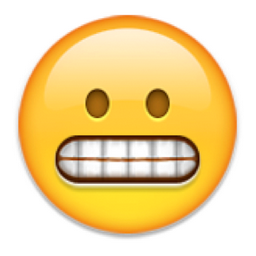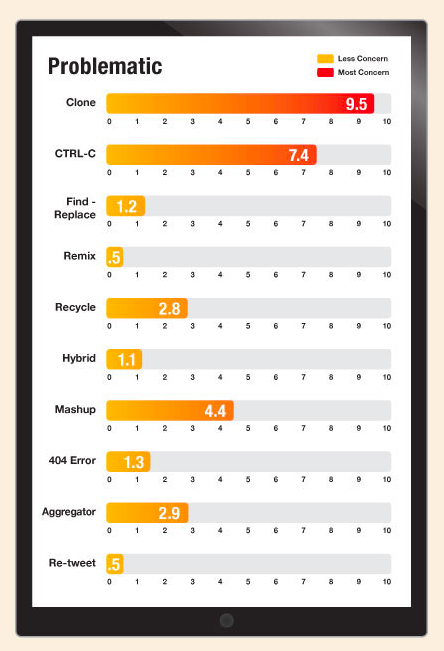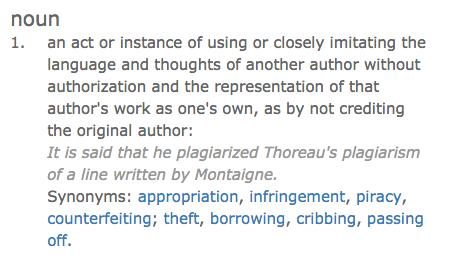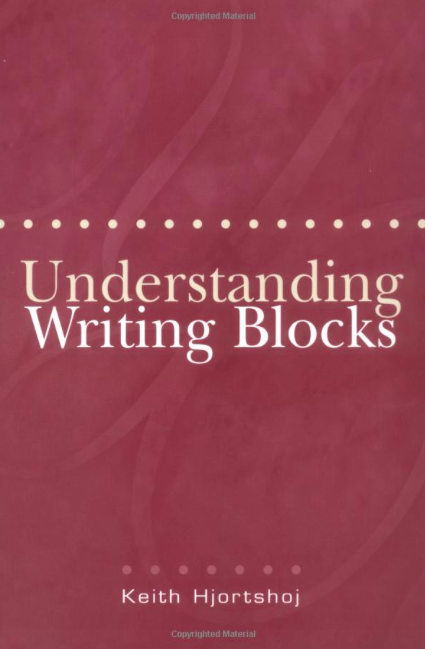Resuming my stint of blog posts relating to 21st century literacies, I wanted to include some research that I recently presented at UMass Boston English Department's Conference on Teaching Composition, Engaging Practices, while on a panel with my brilliant and talented colleagues from Salem State.
My conference paper discussed how the writer/reader relationship in digital writing is a powerful tool for teaching high school students about writing as a social, dialogical meaning-making act. In the academic world of contrived assignments and prompts that are intended to be read by the audience of the teacher doing the assigning, sometimes it can be difficult to help students tangibly understand how their goal as writers needs to be communication and participation in a larger conversation. Students with an understanding of writing as a removed, individualistic endeavor have to learn to value collaboration and interaction in their writing. In this regard, digital writing can be used as a tool in the modern classroom to give students immediate, hands-on experience with the social and dialogic nature of writing. The idea that writing can and should be responsive within a larger and ongoing conversation is rarely more evident than in digital writing genres, where immediate and prolific distribution, quick response times, and interactive composition designs all contribute to a uniquely blurred distinction between writer and reader. Digital writing creates an environment in which the boundaries between the author and the reader of any text are deeply confounded and subverted in ways that offer students the unprecedented opportunity to explore the interactive and responsive nature of writing.
Writing as a Social Act

The understanding of writing as a social act traces its roots back to Mikhail Bahktin’s understanding of expression through means of discourse with the world around us. In Bakhtin’s view of verbal expression, meaning is formed by the speaker relative to the expressions of other individuals in the speaker’s environment. “I live in a world of others’ words” (Bakhtin, Problems 143). In Bakhtin’s theory, it is impossible to remove words from the ongoing legacy of conversation and cultural expression. With this understanding, all of speech, and, by extension, writing becomes “inherently responsive” and functions, as Bahktin phrases it, as “a link in the chain of communication” (Bakhtin, Genres 68, 84).
One of the implications of understanding writing as participation in an ongoing, responsive dialogue is that the rigid distinctions separating author and reader are blurred. When writing is viewed as a dialogical act, the writer and the author are somewhat conflated, each informing the work of the other through the mutual act of conversation. Kenneth Bruffee phrases it by saying that “reader and writer become part of each others’ sustaining environment” (153).

Helping students develop an awareness of those more complicated reader and writer roles as well as the conversational view of writing that informs those roles is an important part of developing their personal composition processes. Ann Berthoff's theories stress that effective composition pedagogy makes students aware of how language and construction of meaning occur in their own thought processes. Berthoff holds that students do not necessarily need to learn how to form meaning because that is a natural occurrence. The important component of skilled composition instruction is to teach students to be aware of how they form meanings and what impacts that formation. The goal that arises from Berthoff and Bakhtin’s theories is to help students understand how words and expression are formed socially and conversationally in order to help them understand and inhabit their own roles as writers and readers in meaningful ways.
Why does it matter?
Teaching students to understand both the writer and reader roles, as well as how those roles can be blurred and conflated, is a necessary component in teaching students to effectively make meaning through their writing. It allows students to recognize and enter into a community of conversing individuals, engage with diverse perspectives and ideas, and then allow those diverse perspectives and ideas to inform their own as they work to write in ways that then contribute their developing ideas to the wider conversation. Students become aware of themselves and their thought processes in relation to the other writers in a dialogue. Their understanding of their roles as writers is informed by their understanding of their somewhat simultaneous roles as readers of the active and ongoing dialogue in which they are participating, facilitating effective and insightful communication through writing.
The Role of Digital Writing
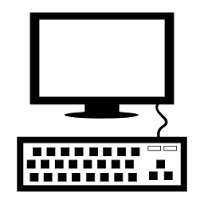
The effort to teach students to understand and engage in the complex reader/writer role is where digital writing becomes extremely useful. Digital writing genres, like the ones discussed in my prior blog post, in which the interactive and collaborative nature of writing is very evident, provide instances for students to write and to interact with one another’s compositions in ways that resist that idea of a removed, individual author. This kind of reader/author interaction is not possible to the same degree in traditional print texts. Elizabeth Losh discusses how, when interacting with a more traditional print text, there is no real opportunity for immediate response to or interaction with the author or fellow readers of that text; however, the same is not true of digital text.
The reader’s interactions with existing digital texts cover a fairly wide scope. An example of a naturally dialogic and collaborative digital text is a blog post like this one! Blog posts are often valued at least in part for the number and complexity of discussion comments on the post. Reader conversation and interaction with one another and with the author of the blog post itself creates the blog page composition as a whole. Generally, comments at the bottom of the blog post are viewed as part of the blog post itself. Other examples of naturally responsive, social digital writing documents are Facebook posts in which readers are invited to comment on the author’s posting, online forums in which a question is posted and the resulting conversation in response to that question makes up the substance of that forum post page as a whole, or email threads, where the thread is made up of compositions by the readers of the initial email. These genres of digital writing are inherently comprised of authorship originating from readers of some version of the document itself, creating a very immediate and tangible sense of the ways in which composition is social, active, and responsive.
Another unique way in which digital writing blurs the distinction between author and reader centers around the chronology with which a reader experiences a text. In traditional print texts, the author creates a fairly linear, one-directional experience that the reader is expected to undergo exactly as the author has laid out. Chapters and pages are numbered and the expectation is that the reader will read them in that order, starting at the top, left-hand corner of the page and working their way across and down. Gunther Kress observes that this form of composition limits the “reader’s freedom to act” (3). In digital compositions, this is often not the case. Websites feature large bodies of text and information arranged in nonlinear formats. There is not a predetermined or even a suggested reading path for these sites. Readers of this kind of digital text are authors of their own experiences. They choose the point at which they enter a page and the approach they take to reading the site as a whole. The same is true of blog posts that include hyperlinks in the text. These hyperlinks are scattered throughout the text, giving the reader the choice of whether or not to click those links or what order to click them in. Gunther Kress summarizes the impact this kind of composition has on the role of the reader by saying “In this new … world, it is the readers who fashion their own knowledge, from information supplied by makers of the site” (6).
Getting Students Involved
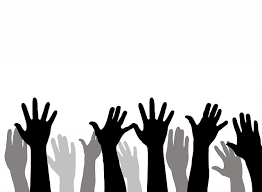
Going beyond using the nature of digital writing to merely expose students to the conversations that composition creates and engages in, digital writing can also be incorporated into the classroom in order to offer students the opportunity to actually experience and participate in those conversations. Part of the appeal of using digital writing in the classroom is the access students gain to the ongoing conversations we are trying to teach them about; they can see the activity of the conversation and then join in with their own compositions and thoughts. The Internet’s capacity for speed and reach creates an incredible potential for student interaction with a nearly infinite range of possibilities. Utilizing classroom blogs, posting to academic forums, or commenting on news articles are all examples of ways in which students can gain valuable experience in reading a text, composing a response, and then joining in the wider conversation. This sort of experience can tangibly and practically teach students that, as readers, they also bring authorial influence to their reading; in authoring a composition, they must be aware of the conversation their composition contributes to and how other members of that dialogue can and potentially will respond. Participation in these types of digital writing conversations can help cultivate a working understanding of composition as dialogical and social, which creates more thoughtful, skilled, and engaged writers who are capable of utilizing the 21st century digital literacies discussed in my blog post introducing this series.
How This Empowers Diverse Student Writers
Incorporating this social, dialogical understanding of composition pedagogy into the classroom using digital writing also has the potential to empower students of diverse ability levels and backgrounds. It is a pedagogy that is, as Elizabeth Losh phrases it, “critical of dominant ideologies about language that reinforce existing and often unjust power structures, which exclude certain social actors from participating in communicative exchanges” (58). Digital writing uniquely complicates the separation between author and reader in a way that challenges social and cultural standards that dictate who has the influence to author texts and who does not. When the authority of the author role becomes accessible to everyone equally, that authority is profoundly challenged. As our very rigid, binaried understandings of the role of author in relation to the reader erode and disappear, the influences of social power that privileged the authorial role also disappear. By demonstrating that writing itself is social and conversational, students can access a means to change the social environment in which they are conversing by claiming an authorship role for themselves.
Conclusion
Ultimately, writing is most meaningful when it is used as a means of communication with and participation in the world at large. It is difficult to bring students to a place where they can understand this social nature of writing in a practical way. The complicated author/reader role in digital writing provides the perfect platform from which to launch a student’s exploration of writing as a social act. Incorporating digital writing into the classroom offers students an opportunity to understand and also participate in social writing genres in ways that challenge their current understandings of the roles of readers and authors. If that challenge is successful, it will empower students to claim the role of author as their own and use their writing to contribute meaningfully to the world in which they live.
References:
Bakhtin, M.M., Problems of Dostoevsky’s Poetics. Ed. Caryl Emerson. MN: University of Minnesota Press, 1984. Print.
Bakhtin, M.M., Speech Genres and Other Late Essays. Ed Caryl Emerson and Michael Holquist.Trans. Vern W. McGee. TX:University of Texas Press, 1986. Print.
Bruffee, Kenneth A. “Reading and Writing as Social Acts.” Introductory Talk. Indiana Teachers of Writing Spring Seminar. May 1983. Address.
Kress, Gunther. “Gains and losses: New forms of texts, knowledge, and learning.” Computers and Composition 22. (2005): 5-22. Print.
Losh, Elizabeth. Virtualpolitik. MA: Massachusetts Institute of Technology, 2009. Print.
Ludwig, Teresa Marie. A study of Ann Berthoff’s composition theory. MA Thesis. Iowa State University, 1987. Web. 11 March 2015.
